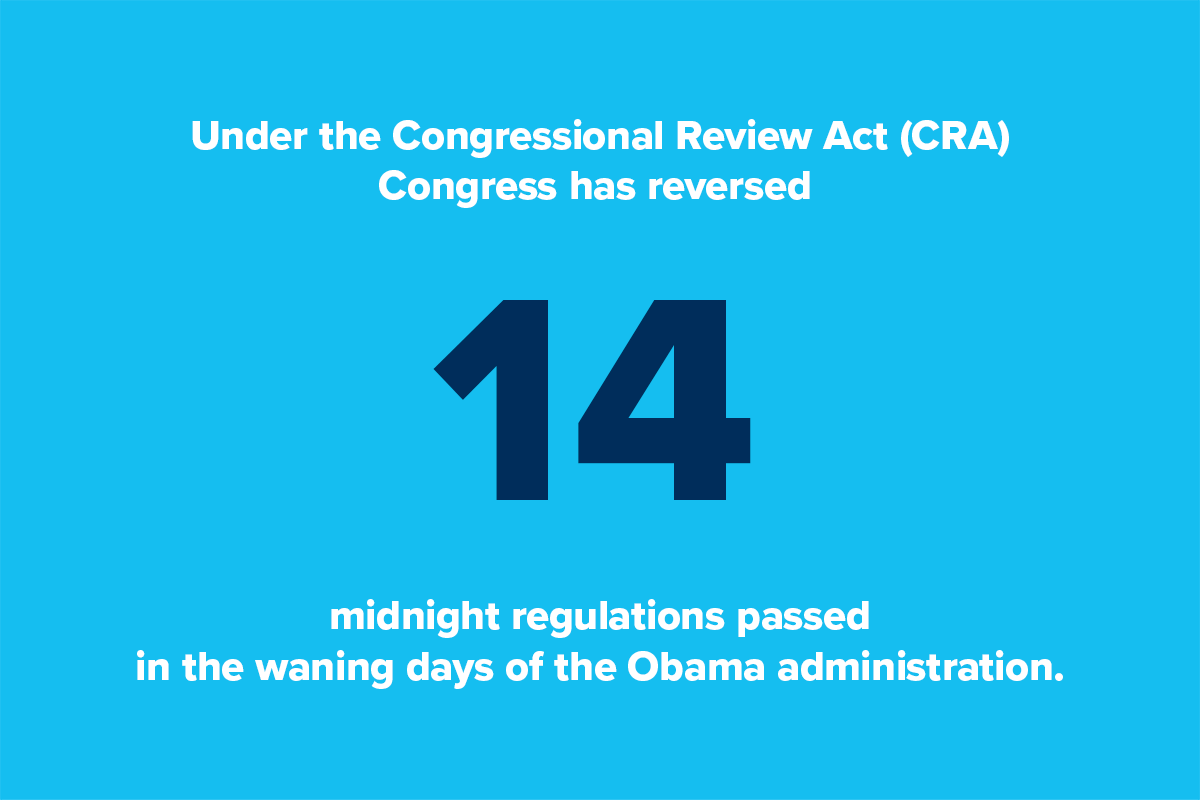Published
December 18, 2017
After coming into office on the heels of a relentless regulatory onslaught from the Obama administration, President Trump and leaders in Congress worked diligently throughout 2017 to rein in the regulatory state. These actions didn’t always make big headlines, but their results certainly have. Soaring business confidence, a robust stock rally, and consecutive quarters with growth rates of 3% tell the story of an economy finally feeling relief from overregulation.
President Trump started quickly upon entering office, promptly halting all pending regulations and signing executive orders to ensure that new rules were issued only if old ones were eliminated. Congress also took bold action early to seize a narrow window of opportunity to invalidate regulations using the Congressional Review Act (CRA).
Under the CRA, Congress reversed 14 midnight regulations issued in the waning days of the Obama administration. One example was the Federal Contracts Blacklisting Rule, a devastating regulation that could have barred businesses from federal contracts for mere allegations of labor violations. Congress more recently used the CRA process to rescind the anti-arbitration rule, which would have effectively banned arbitration clauses in consumer contracts and forced all disputes to be dealt with in court. It would have amounted to an enormous gift to the trial bar.
The Environmental Protection Agency was another bright spot for rule reversals. It took action to repeal harmful regulations like the sweeping Waters of the U.S. rule, which broadly expanded the definition of federally regulated bodies of water, and the Clean Power Plan (CPP), which sought to regulate large swaths of the economy.
Harmful labor regulations were also rescinded, including the Department of Labor’s (DOL’s) joint employer rule, which created confusion and threatened the ability of businesses to work with each other, particularly in the franchising setting. DOL also delayed key portions of the Fiduciary Rule, which would have further increased costs and limited choices for retirement savers.
A final example was a court’s blocking of the overtime rule owing to a legal challenge brought by the U.S. Chamber of Commerce. The rule would have doubled the salary level for exemption from overtime pay, raising costs for businesses and causing workers to have their hours cut.
The Chamber set the table for this historic regulatory relief through many years of lobbying Congress, engaging with agencies, and fighting in the courts. Heading into 2018, we stand ready to build on these results and advance a smart regulatory approach that will allow businesses to invest, expand, and hire with confidence.
About the author

Thomas J. Donohue
Thomas J. Donohue is advisor and former chief executive officer of the U.S. Chamber of Commerce.




